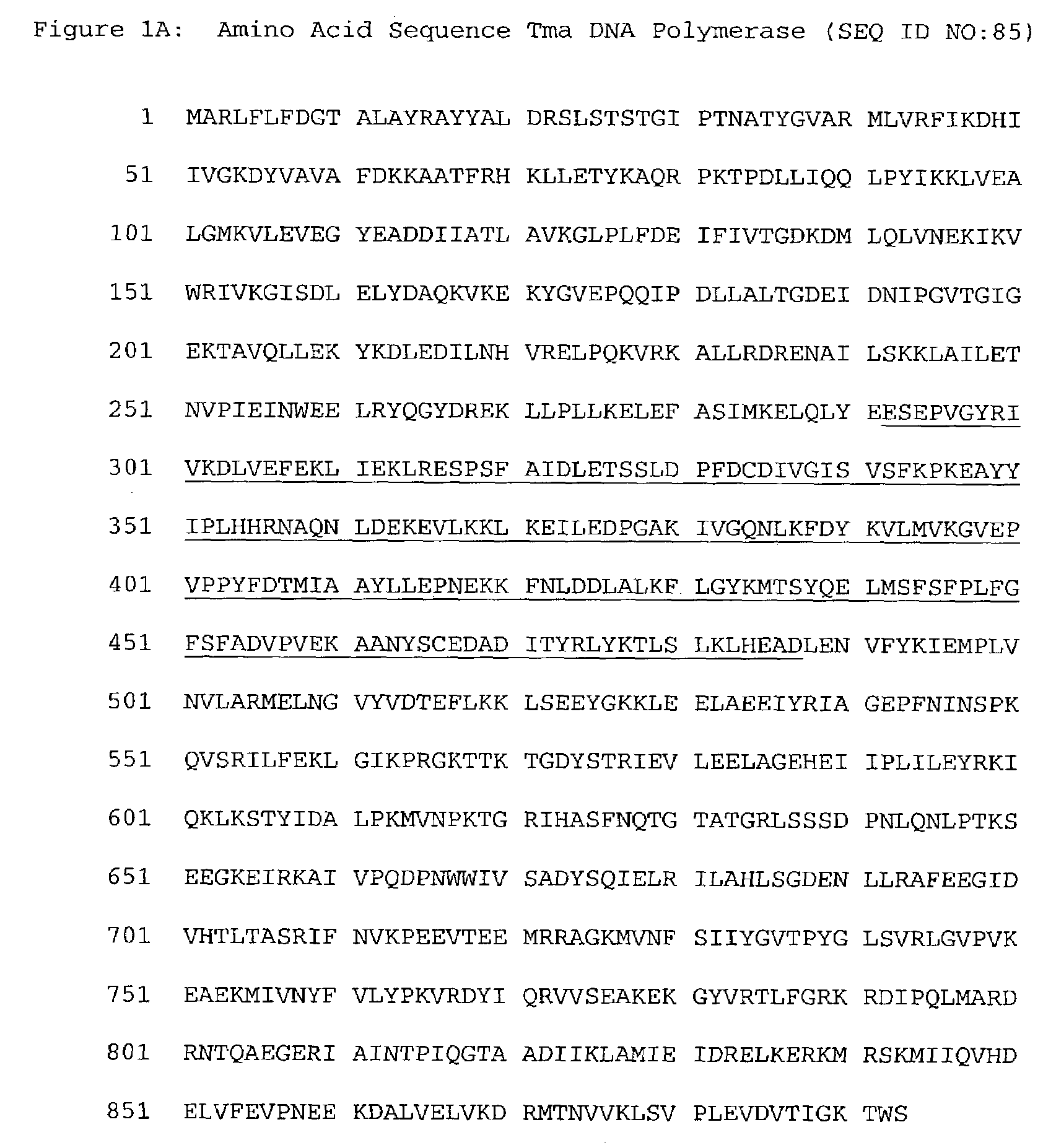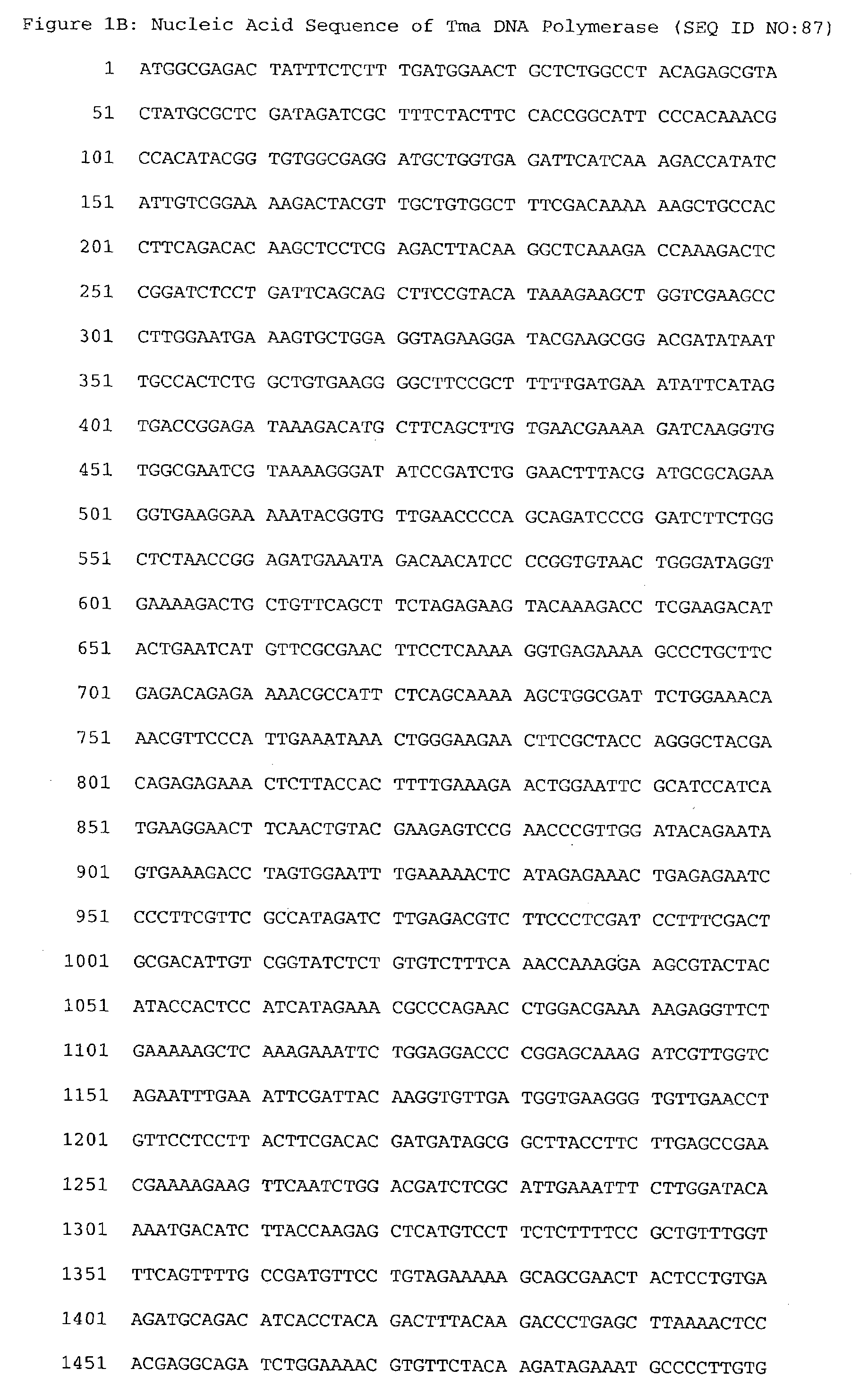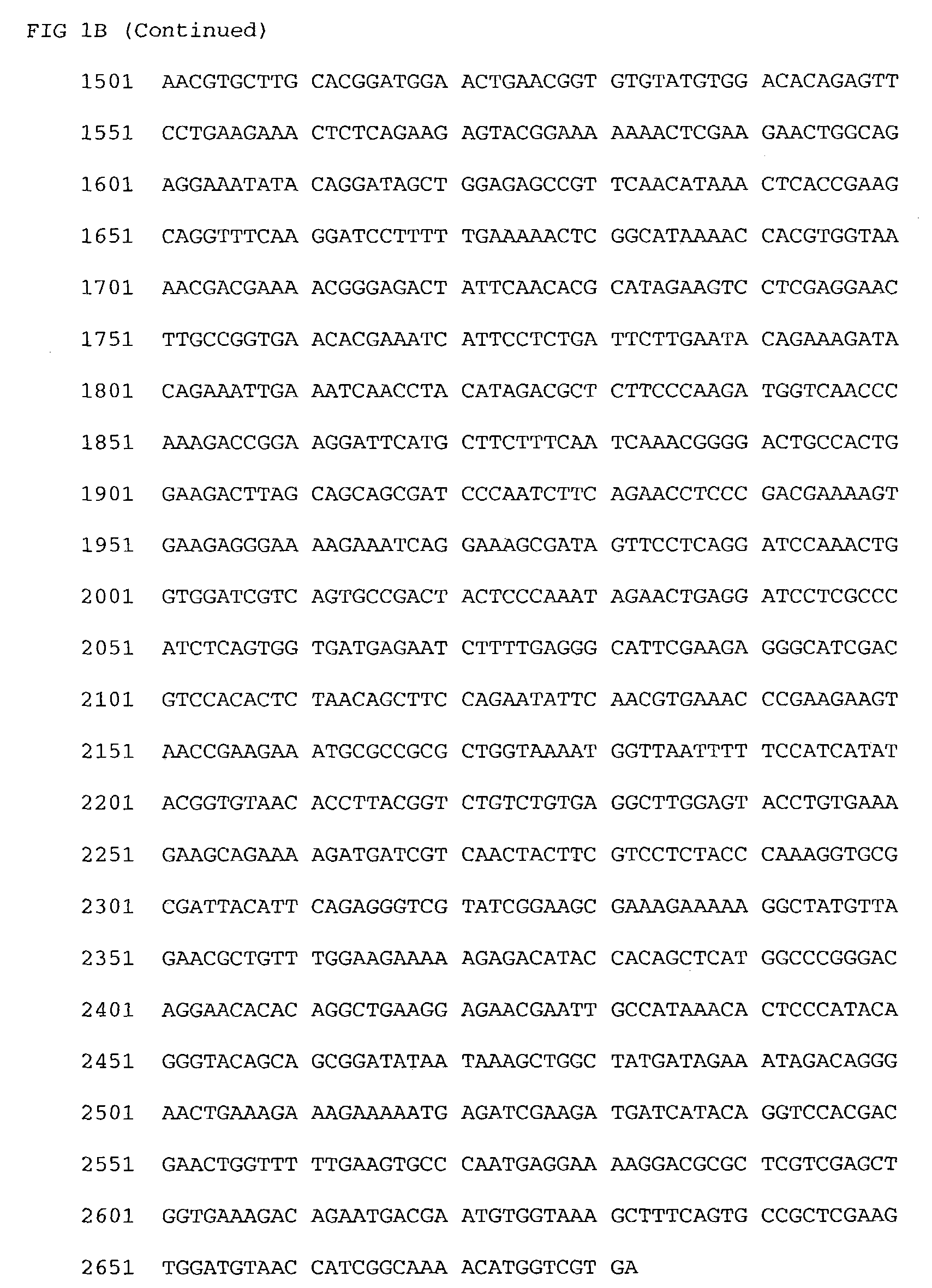Thermostable or thermoactive DNA polymerase molecules with attenuated 3′-5′ exonuclease activity
a dna polymerase and attenuated 3′-5′ technology, applied in the direction of enzymology, peptides, transferases, etc., can solve the problems of low efficiency of amplification, high cost, time-consuming, etc., and achieve less degradation, less degradation, and high fidelity replication
- Summary
- Abstract
- Description
- Claims
- Application Information
AI Technical Summary
Benefits of technology
Problems solved by technology
Method used
Image
Examples
example 1
Mutagenesis of pCS6 and pCS5
[0672]This example describes the site directed mutagenesis of the 3′-5′ exonuclease domain of a thermostable and thermoactive DNA polymerase.
[0673]In a first round of mutagenesis, a site-directed mutagenesis approach was used to alter residues in a thermostable DNA polymerase that are either homologous residues known to be important for coordinating divalent metal cations in the active site of the proofreading domain of the Klenow fragment or located between the homologous residues. See Derbyshire et al., 1995, Methods in Enzymology 262:363–85, incorporated herein by reference in its entirety. Plasmid pCS6, encoding the mutant chimeric thermostable DNA polymerase CS6, was used. See FIG. 5. CS6 is a mutant form of the chimeric thermostable DNA polymerase CS5. See FIG. 4. The N-terminal portion of CS5 is the N-terminal 291 residues of the DNA polymerase from Thermus species Z05, encoding its 5′-3′ exonuclease activity. See U.S. Pat. No. 6,228,628. The remai...
example 2
[0686]Production and Purification of Mutant Thermostable DNA Polymerases
[0687]The plasmids resulting from the ligation described above contain the polymerase gene under control of the λ PL promoter. Host cells (DG116, ATCC #53606) containing a cI857 (thermolabile) λ repressor were transformed with the plasmids. DG116 cells transformed with the plasmids containing the wild type or mutagenized polymerase gene were used to inoculate 10 ml standard flask media (SFM; comprising glucose, vitamin B1, casamino acids, and minimal medium) with ampicilin (100 μg / ml) and grown overnight at 30 C, 250 rpm. 5 ml of the overnight culture was used to inoculate 450 ml SFM+ampicillin and shaken at 30 C, 250 rpm until the culture reached an OD600 of 0.6–0.8. The culture was then transferred to 37 C and grown overnight at 250 rpm to achieve a temperature-induced expression of the polymerase. See, e.g., U.S. Pat. No.s 5,079,352, 5,420,029 and 5,618,711. The overnight growth was pelleted at 3,000×g for 15...
example 3
Standard Assay for 3′-5′ Exonuclease Activity
[0689]The following example provides the Standard Assay for determining the 3′-5′ exonuclease activity of thermostable or thermoactive DNA polymerase and the definition of a unit of 3′-5′ exonuclease activity.
[0690]To compare the 3′-5′ exonuclease activities of the mutant derivatives of CS5, degradation of the carboxyfluorescein (FAM)-labeled single-stranded oligonucleotide substrate NJS40 was measured:
NJS40: FAM-GCGCTAGGGCGCTGGCAAGTGTAGCGGTCAC (SEQ ID NO:80)
[0691]The Standard Assay (40 μl) contained 4 pmol (100 nM) FAM-labeled single-stranded NJS40 oligonucleotide in 50 mM Tricine, pH 8.3, 25 mM KOAc, 5% w / v DMSO, 0.5 mM Mn(OAc)2 and 5% (v / v) contributions from enzyme storage buffer (in reaction: 1 mM Tris, pH 8.0, 5 mM KCl, 0.005 mM EDTA, 0.025% TWEEN-20, 0.05 mM DTT, 2.5% glycerol). Reactions were initiated by addition of NJS40 and the Mn(OAc)2 and were incubated at 63° C. for 15 minutes. Reactions were quenched by addition of 40 μl 5...
PUM
| Property | Measurement | Unit |
|---|---|---|
| pH | aaaaa | aaaaa |
| pH | aaaaa | aaaaa |
| temperatures | aaaaa | aaaaa |
Abstract
Description
Claims
Application Information
 Login to View More
Login to View More - R&D
- Intellectual Property
- Life Sciences
- Materials
- Tech Scout
- Unparalleled Data Quality
- Higher Quality Content
- 60% Fewer Hallucinations
Browse by: Latest US Patents, China's latest patents, Technical Efficacy Thesaurus, Application Domain, Technology Topic, Popular Technical Reports.
© 2025 PatSnap. All rights reserved.Legal|Privacy policy|Modern Slavery Act Transparency Statement|Sitemap|About US| Contact US: help@patsnap.com



